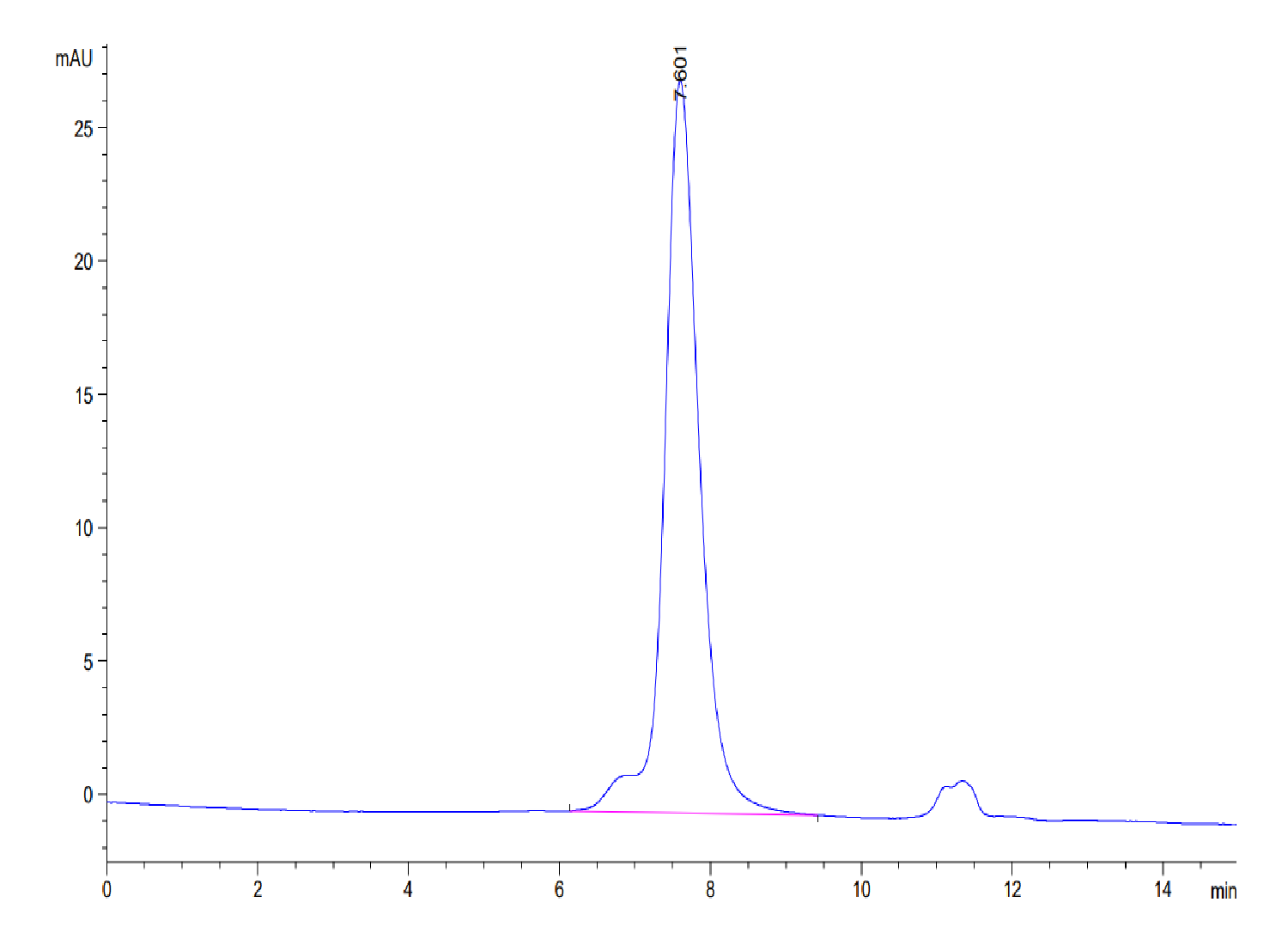|
| Mouse CDH17/Cadherin 17 Protein (LTP10486) |
|
| LTP10486 |
|
| 100ug |
|
|
$450 In stock |
| Liver-intestine cadherin (CDH17) has been known to function as a tumor stimulator and diagnostic marker for almost two decades.In vivo studies showed CDH17 knockout resulted in apoptotic PC tumor death through activating caspase-3 activity. Taken together, CDH17 functions as an oncogenic molecule critical to PC growth by regulating tumor apoptosis signaling pathways and CDH17 could be targeted to develop an anti-PC therapeutic approach. |
| Recombinant Mouse CDH17/Cadherin 17 Protein is expressed from Expi293 with His tag at the C-terminal. It contains Phe26-Met786. |
|
| CDH17/Cadherin 17 |
|
| Mouse |
|
| Q9R100 |
|
| Phe26-Met786 |
|
| The protein has a predicted MW of 85.4 kDa. Due to glycosylation, the protein migrates to 90-115 kDa based on the Tris-Bis PAGE result. |
|
| 0 |
|
| C-His |
|
| Expi293 |
|
| > 95% as determined by Tris-Bis PAGE; > 95% as determined by HPLC |
|
| Less than 1EU per ug by the LAL method. |
|
| Lyophilized from 0.22 um filtered solution in PBS (pH 7.4). Normally 8% trehalose is added as a protectant before lyophilization. |
|
| Reconstituted protein stable at -80 C for 12 months, 4 C for 1 week. Use a manual defrost freezer and avoid repeated freeze-thaw cycles. |
|
| Shipped at ambient temperature. |
|
| Centrifuge tubes before opening. Reconstituting to a concentration of more than 100 ug/ml is recommended. Dissolve the lyophilized protein in distilled water. |
|
|  |